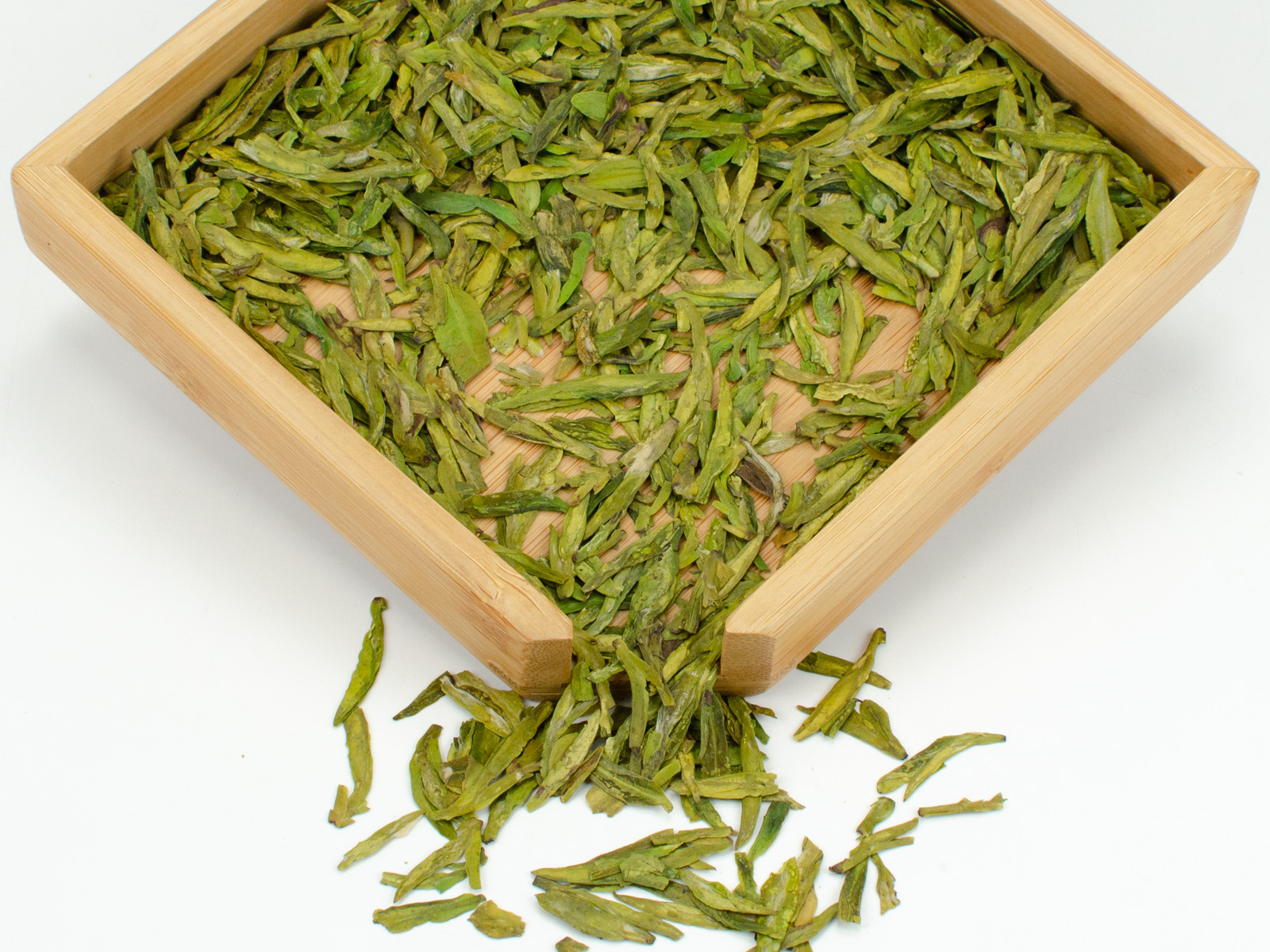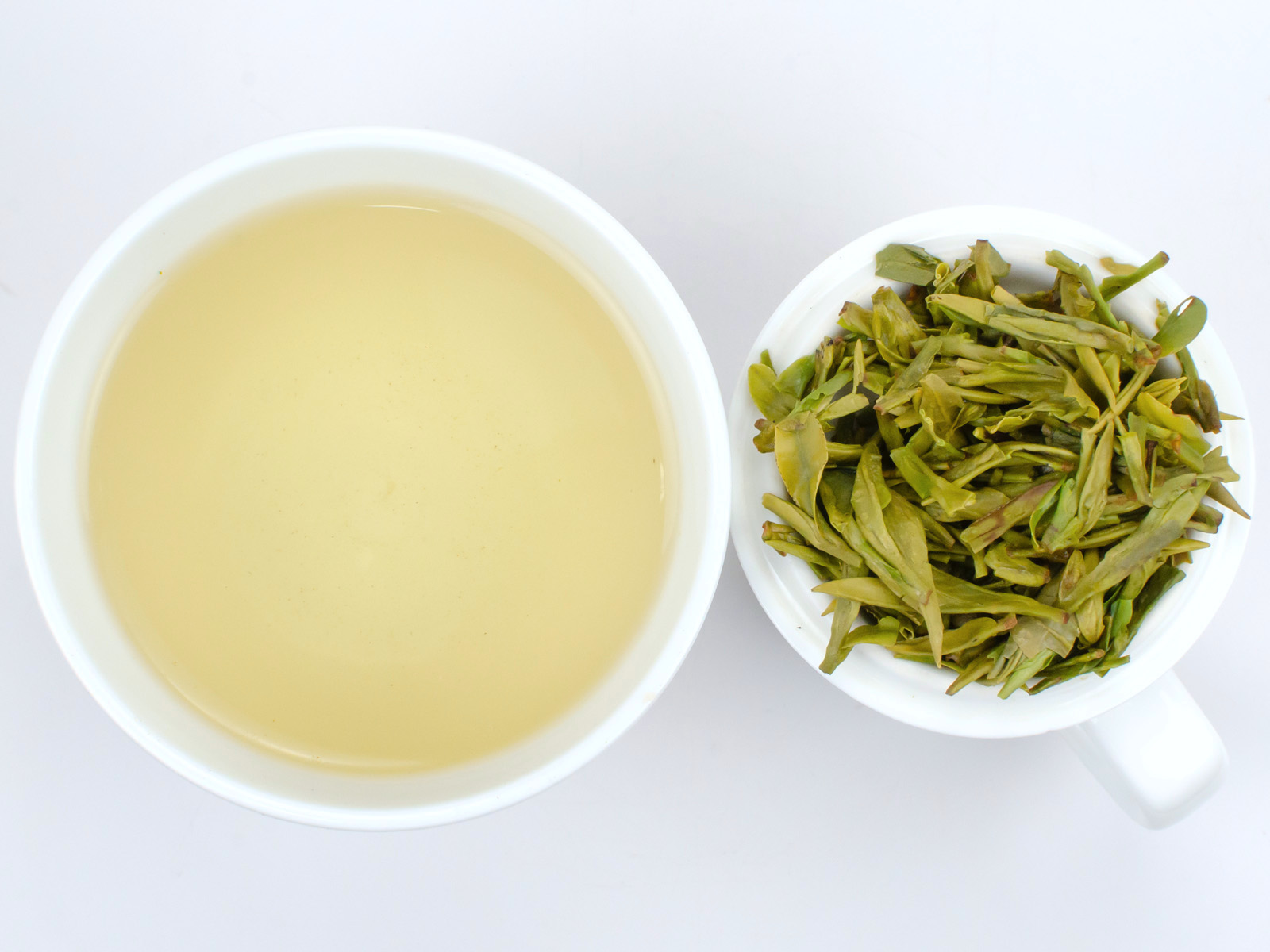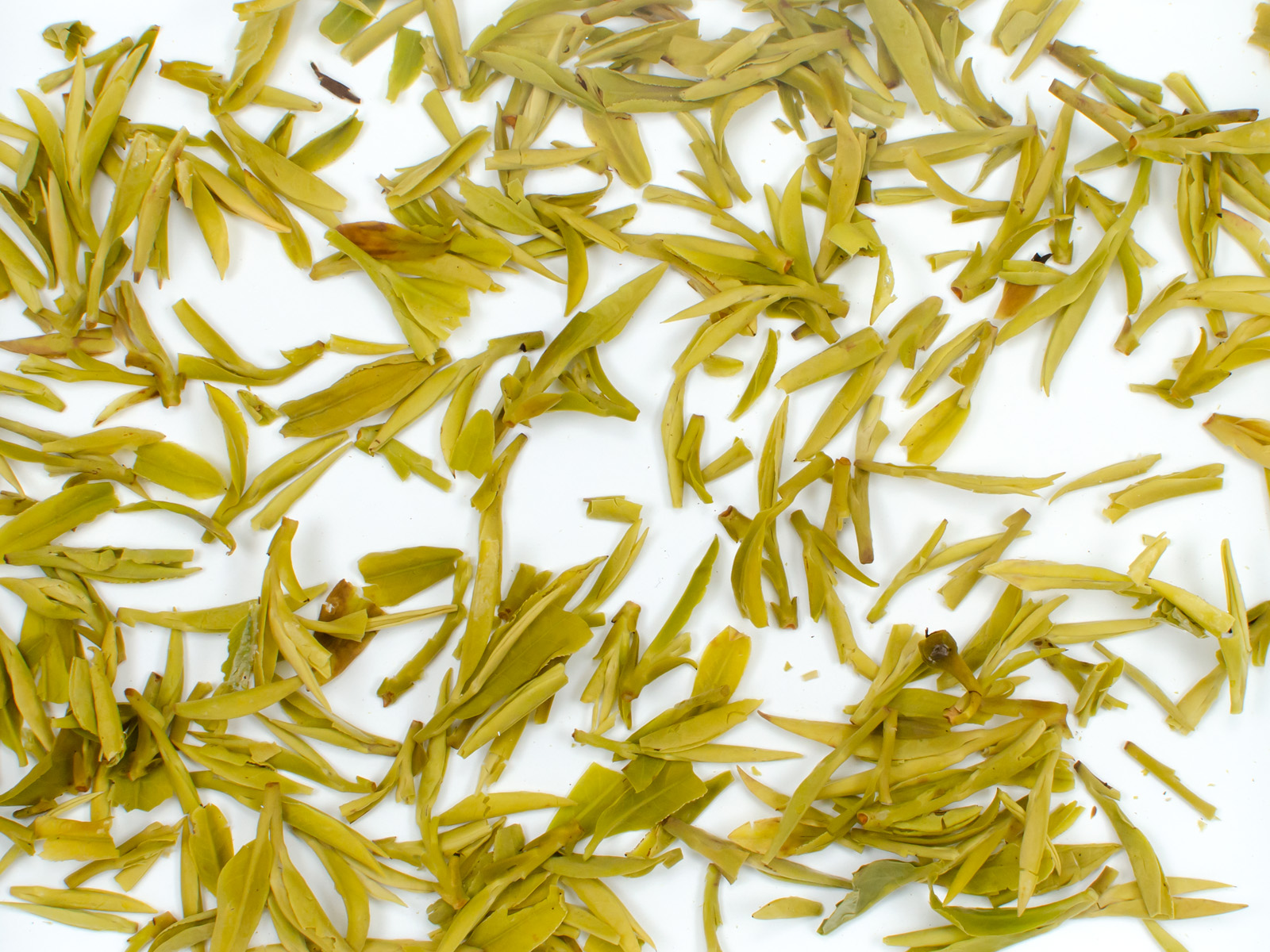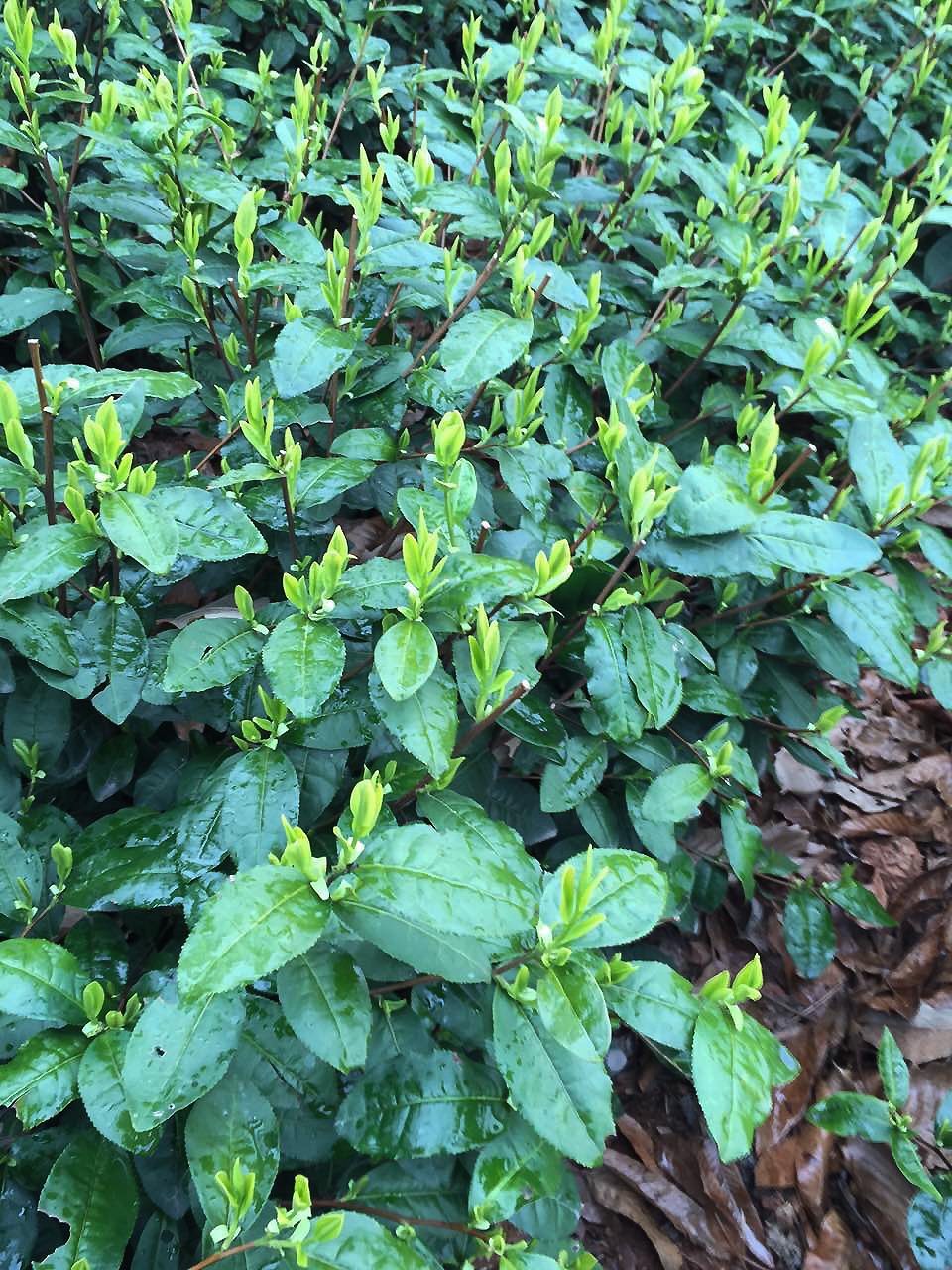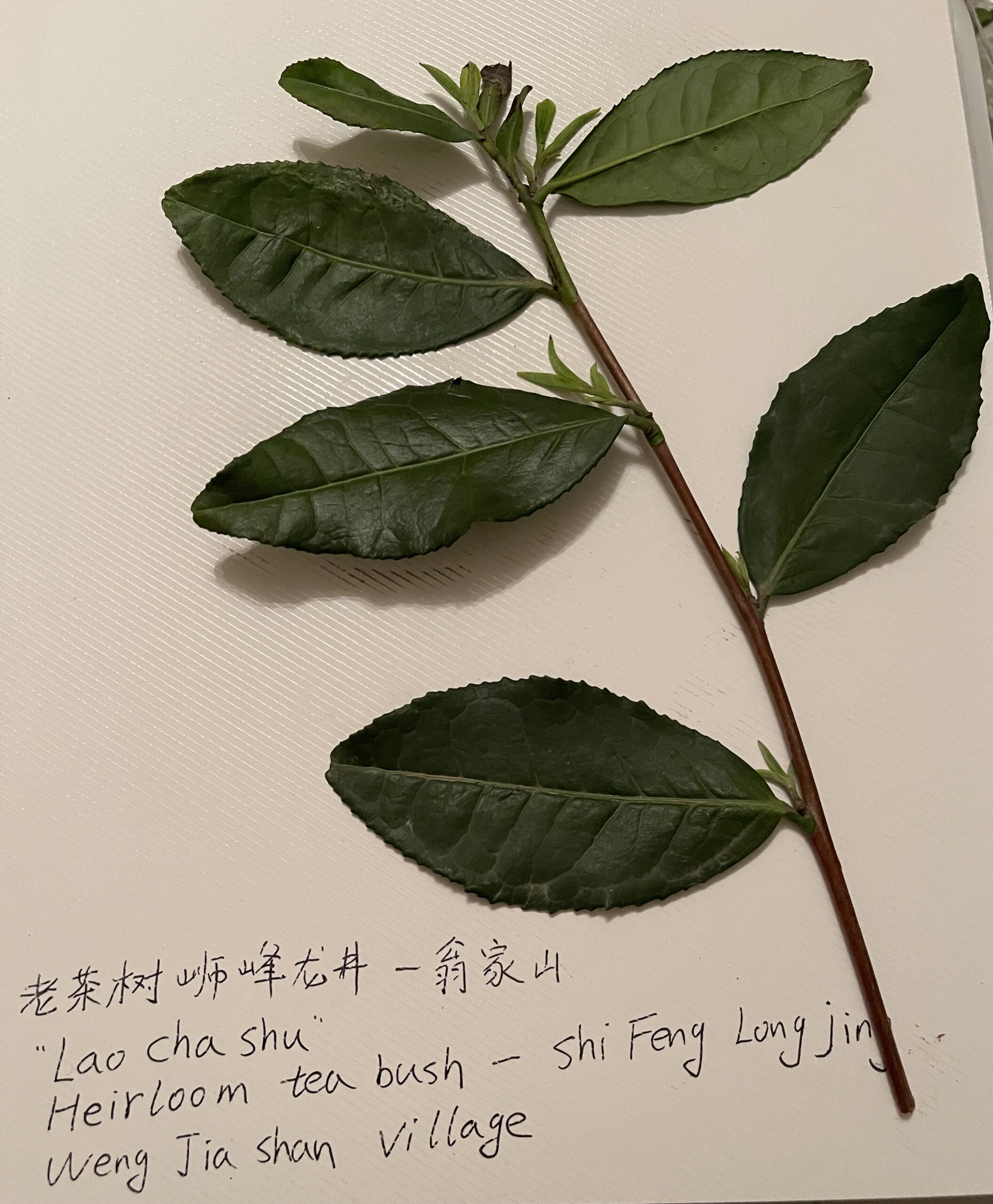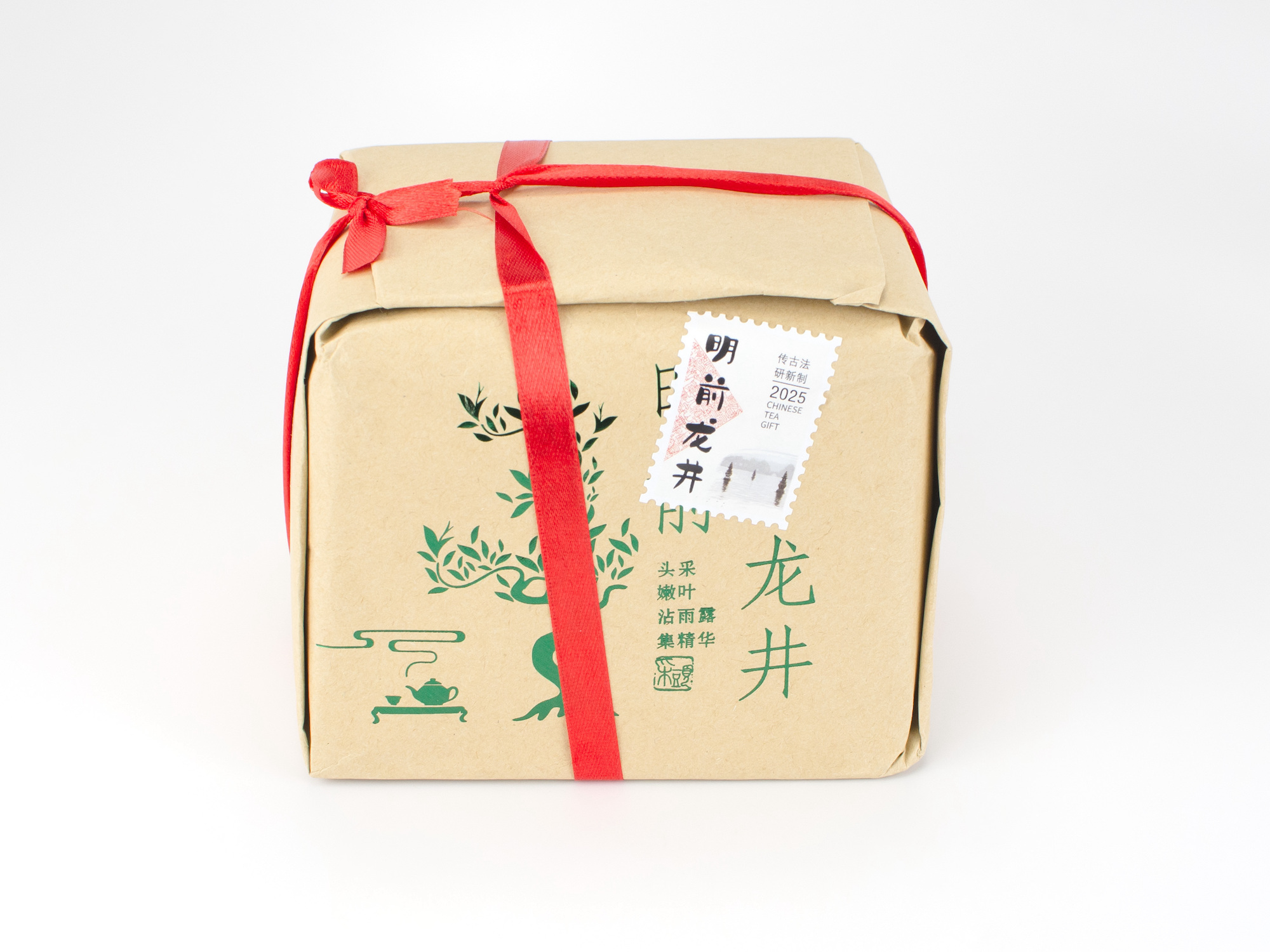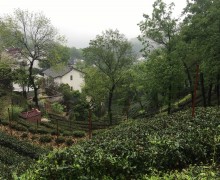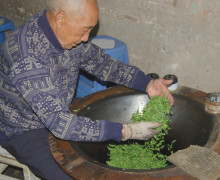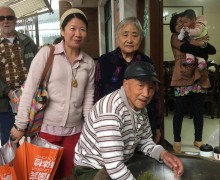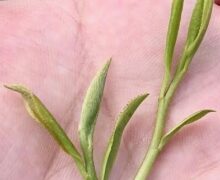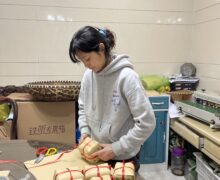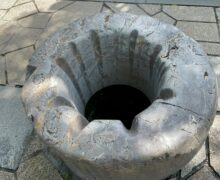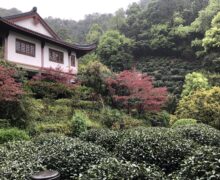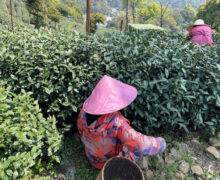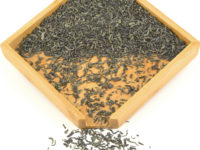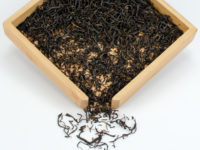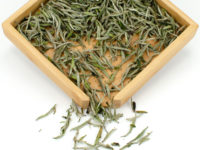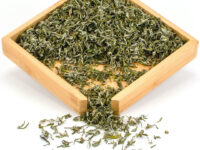Shifeng Longjing (Shifeng Dragon Well)
Green Tea 2025
The most famous green tea in China, handmade from 70+ year old tea bushes of the original Longjing (Dragon Well) cultivar. Deep complex character with a rich flavor and an unusually nutty aroma.
2025’s crop of Shifeng Dragon Well delivers all the classic, toasty attributes of its pedigree but stands out with an atypical citrus-like undercurrent.
The 250-gram and 500-gram sizes are sold in this tea’s traditional paper packaging (see last product photo), available online only.
- Tea Origin
- Shifeng Mountain, West Lake, Hangzhou City, Zhejiang Province, China
- Tea Bush
- Lao Chashu Quntizhong (Old Heirloom Tea Bush)
- Tea Maker
- Chen Xiaochao, Cheng Wenjing, and Weng Shunqin
- Harvest Time
- Late March
- Plucking Standard
- One bud, two leaves
Shifeng Longjing (Shifeng Dragon Well) has a rich and complex flavor that changes as you drink. Owing to its traditional processing, the tea’s aroma is not grassy — it is an uncommon combination of gentle floral notes and a nutty toasted soybean or chestnut character. This singular tea experience is created by a combination of traditional growing practices, slightly later harvest time, and the now rare processing style done almost entirely by hand.
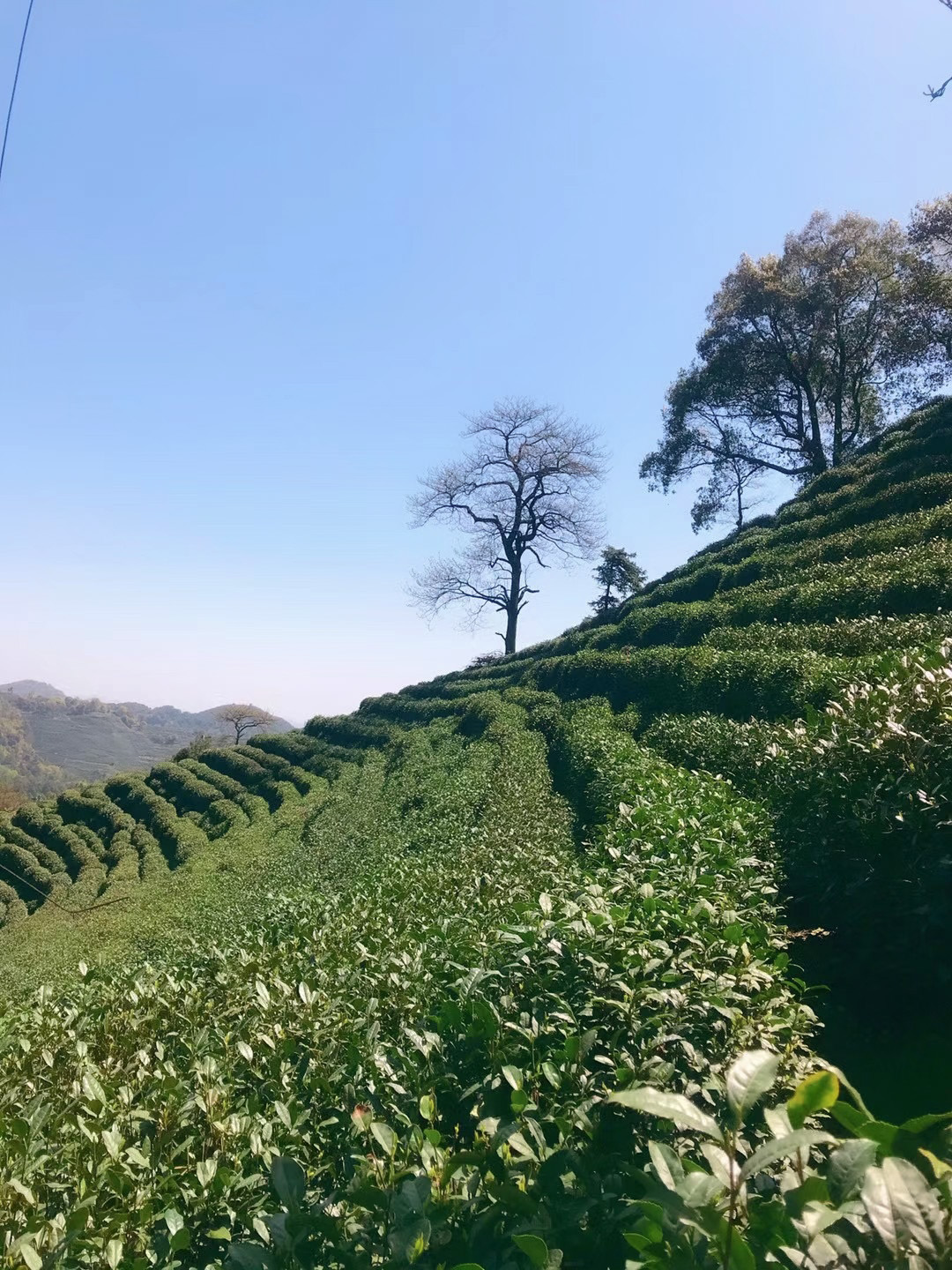
Shifeng Longjing is the most famous green tea in China, but few have tasted the original, which grows in the Shifeng Mountain region in Hangzhou City around the beautiful scenic West Lake. Shifeng Mountain is the original center of Longjing tea production, and the most highly prized teas are produced around this area.
The leaves are harvested at a plucking standard of one bud and two tender leaves. Compared to our Da Fo Longjing, Shifeng Longjing has a deeper, nuttier flavor and a more complex aftertaste.
The Longjing tea makers of Wengjiashan in West Lake
We are privileged to offer authentic Shifeng Longjing directly from Chen Xiaochao, who was an apprentice of the famous tea master Weng Shangyi. Mr. Weng Shangyi, who made Shifeng Longjing for us since 2007, sadly passed away in 2019 at the age of 90. Mr. Chen has been working for the Weng family making Dragon Well tea for over 30 years, assisted by Mr. Weng’s granddaughter-in-law Cheng Wenjing. He still makes this historic tea almost entirely by hand using leaves from bushes grown in the Weng family’s tea garden in Wengjiashan of the Shifeng Mountain region.
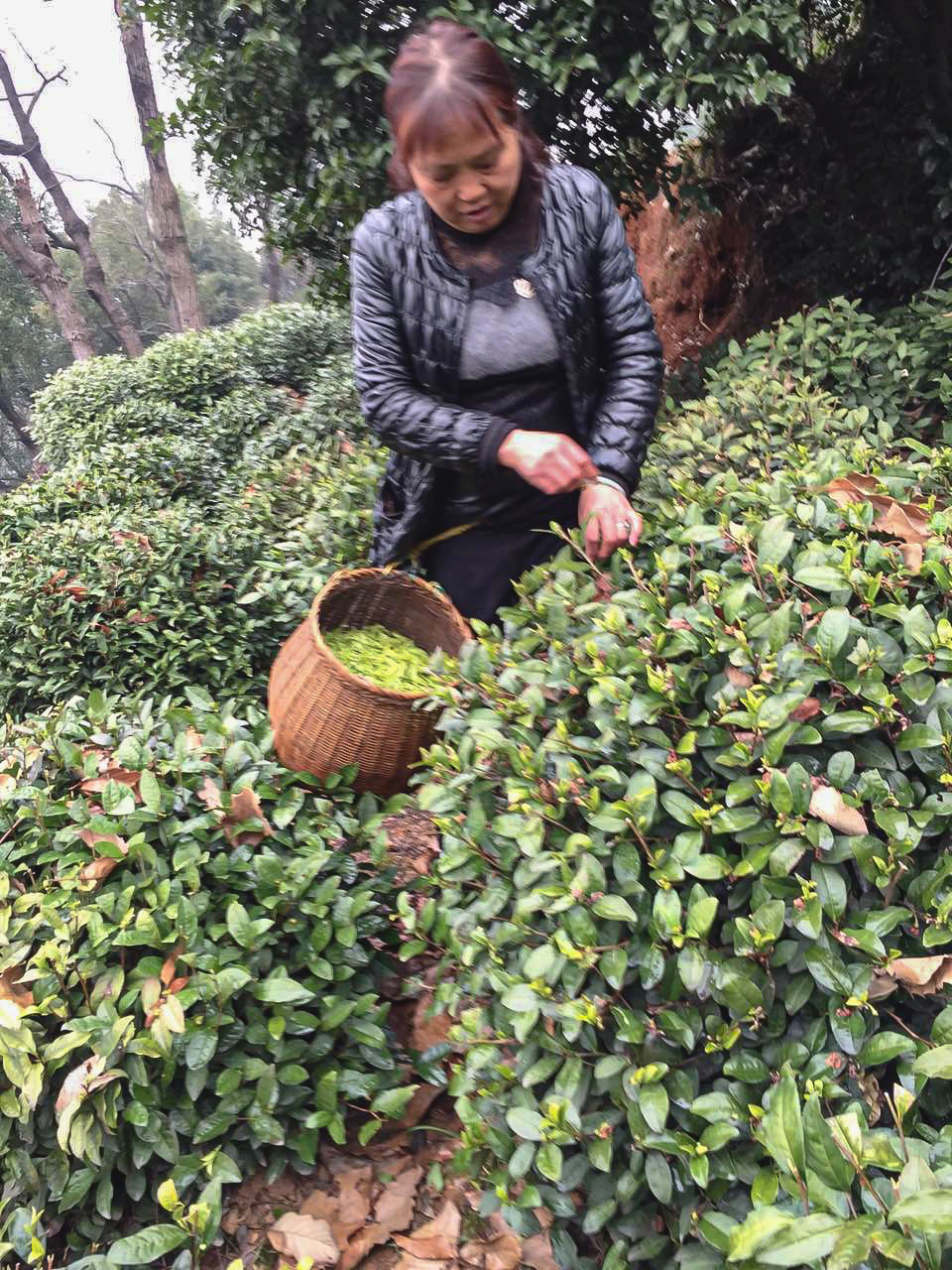
The Weng family has been making traditional tribute tea by hand for generations. They still use the leaves from tea bushes passed down in the family. Weng Shangyi’s daughter, Weng Shunqin, is a knowledgeable tea maker in her own right who now looks after the management of the family tea gardens. Their gardens are populated by old seed-grown quntizhong heirloom tea bushes that have strong, deep roots.
Most Dragon Well on the market is made from a commercial cultivar known as Longjing #43 (our Da Fo Longjing is made from this bush). Government trade groups have heavily promoted this tea bush over the last several decades, but the Weng family has insisted on keeping their older bushes.
Longjing from the Shifeng area enjoys historical prestige as a tea favored by emperors. Today, it is still regarded as a national treasure and is often used as a state gift. For many years, the Weng family’s yearly duty was to sell some of their earliest tea to the government before they could begin selling tea to anyone else. We have also selected some of their earliest tea to share with you.
Making traditional handmade Shifeng Longjing
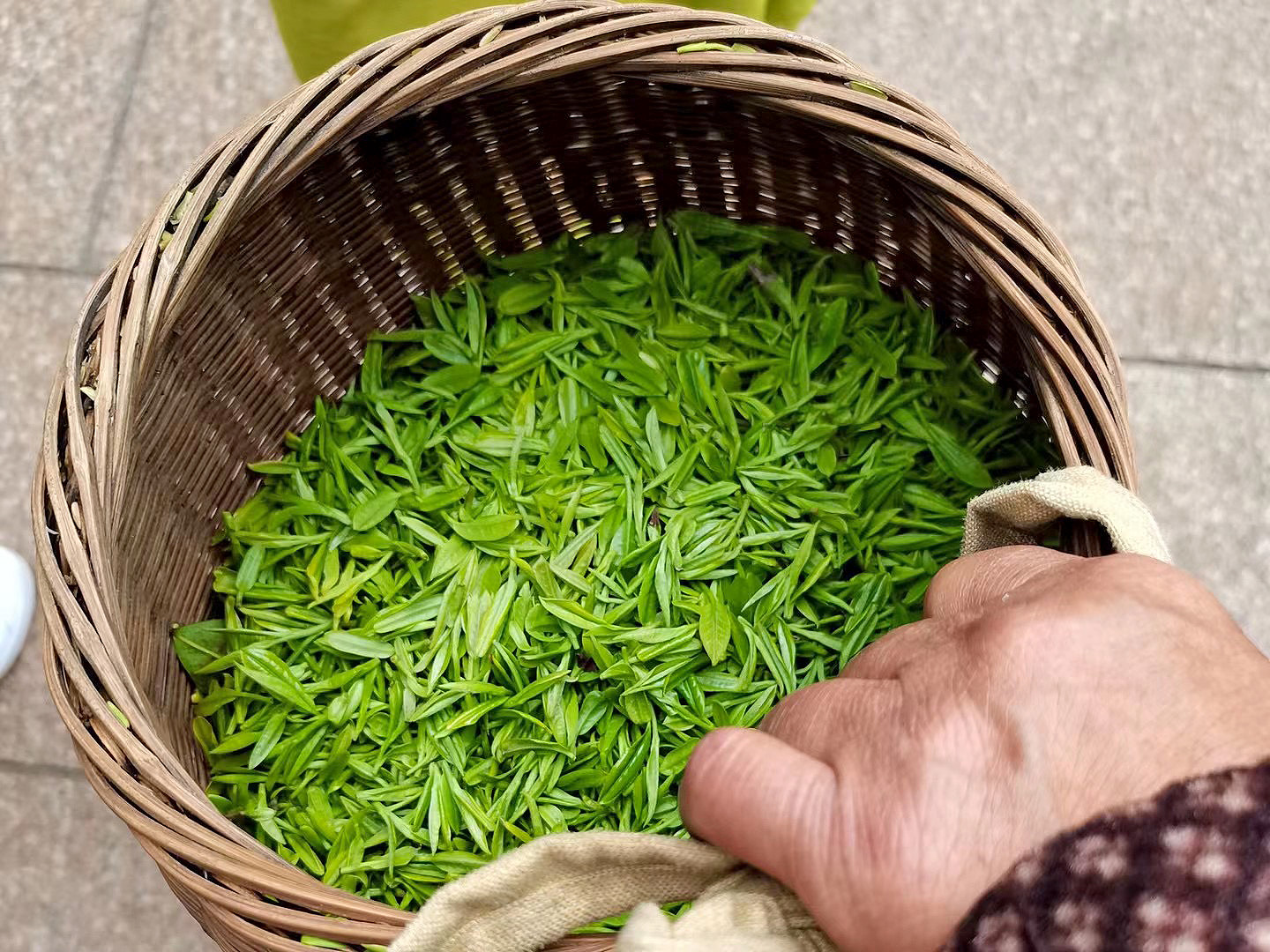
This particular tea is harvested at the end of March, before the Qing Ming Festival on April 5th. Fresh hand-plucked leaves are brought back from the gardens and allowed to wither for a couple of hours. Then they begin the firing process to fix the leaves and prevent oxidation. After an initial machine firing, the tea is left to sit for another 3-4 hours before being fried two more times by hand in the wok. (Note: this standard initial machine firing is required by the local government as of 2008.)
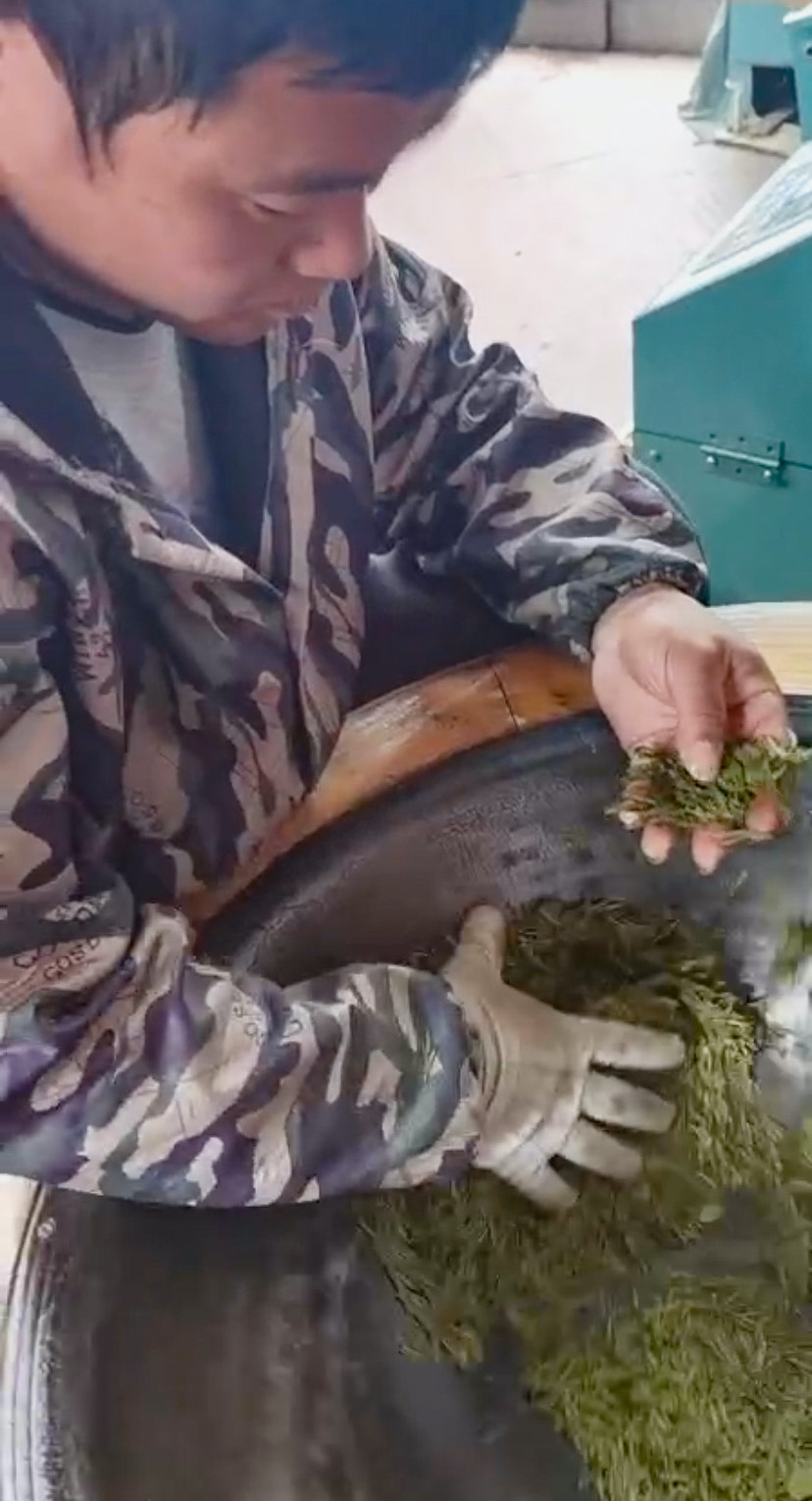
For the hand frying step in the wok that develops Longjing’s nutty character, the tea maker pan fires about 150 grams of tea at a time to shape the leaves and remove some of their moisture. In the third and final frying, more leaves can be fried at a time since they have shrunk from losing moisture. When finished, the tea leaves have a moisture content under 5%. Any drier and they would break easily; any more moisture and they would not be shelf-stable for long. The tea maker judges the tea’s progress with eyes and hands alone, relying on an intuitive sensitivity built by decades of experience to tell them when the tea approaches completion.
Characteristics of quality Longjing tea
Dry leaves of good quality Longjing green tea will be even and uniform in size, showing they were picked in the same season, not a blend. An exception to this are leaves harvested from heirloom seed-grown tea bushes. Due to inherent genetic variability in when their spring leaves flush, longjing made from heirloom tea plants generally appears less even than longjing made from a single clonal cultivar. Longjing leaves’ color is very clear and lightly yellow-green. When the tea is brewed, you can see the plucking standard and not much tea dust or broken leaves. Appreciate the unique fresh fragrance that gently develops over many infusions. We hope that you will enjoy the full-bodied flavor of this remarkable tea.
No chemical fertilizer, pesticide, or herbicide was used in the production of this tea. Click here to read more about our promise to fair trade and the environment.

